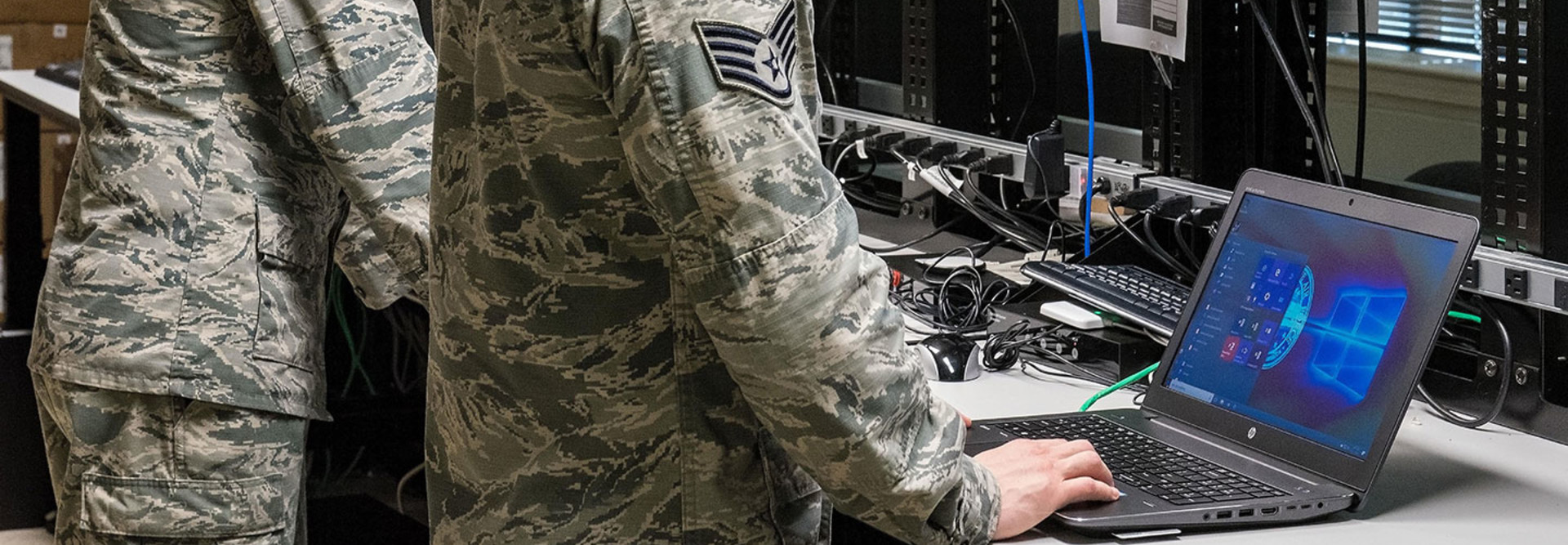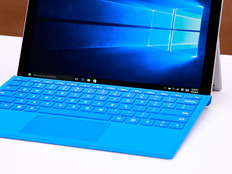Windows 10 Helps Feds Make Use of Open Collaboration Tools
Federal agencies — and the users who work for them and the American public — are benefitting from new ways of working. Evolving collaboration solutions are enabling far greater capabilities than the unified communication tools of the past that were delivered by relatively simple and siloed technologies.
Modern collaboration tools deliver superior results by taking advantage of a data-rich environment and input from every team member to optimize efficiency and productivity.
“If you go back five or 10 years, most workflows were linear,” says Jack Gold, president and principal analyst at IT consultancy firm, J. Gold Associates. “Today, workflows are more like a mesh environment.”
These environments incorporate social tools such as Microsoft Teams and cloud solutions such as Box and Dropbox into agency IT environments, along with traditional text messaging and email. The mix enables users to choose the workflows that best suit them, freeing them up for the creative work that advances the organization.
This approach embodies many elements from the consumer technology sphere — principally the high functionality of mobile devices and the deep sharing enabled by social media. Coupled with analytic tools that encompass both standard databases and unstructured data — which is nevertheless relevant to an agency’s mission — the results can be powerful. Also aiding this new open collaboration is the adoption of cloud storage and hosted software resources. The cloud can minimize the issues of distance and latency, and it can provide a flexible, low-cost alternative to on-premises data centers.
In this model, which combines social, mobile, analytics and the cloud (SMAC), workflows are more fluid and adaptable to individual and work group preferences.
Many solutions vendors are refining their products to take advantage of these tools. For example, Microsoft’s Windows 10 operating system delivers a variety of open collaboration features that enable greater productivity, increased creativity and heightened efficiency.
Numerous agencies, including the Defense Department and military service branches, have embraced a shift toward Windows 10.
The Transportation Security Administration and Social Security Administration are moving ahead with migrations to the new platform, and the Small Business Administration has adopted Windows 10 and Office 365 for cloud-based office productivity.
And the Coast Guard wants to use Windows 10 to improve its cybersecurity and adopt virtualized desktop infrastructure.
Feds Can Take Advantages of Open Collaboration
For many agencies, open collaboration on a digital platform can yield several benefits:
- Casts a wide net for ideas and data: Crowdsourcing can lead to innovation faster than traditional research methods. Instead of working in siloes, researchers can brainstorm and test ideas in tandem while focusing on high-value work.
- Maximizes the contributions of every user: When anyone can access information and offer their ideas, agencies find unexpected contributions to the creation of collateral or strategies. Bringing users together via social tools also creates a feeling of inclusion.
- Enhances individual productivity: Not every activity requires participation from the entire group. With collaboration tools, such as SharePoint or Microsoft Teams, individuals can immediately access documents and people for quick answers on time-sensitive projects.
A recent Forrester Research study found that mobile users who employ Windows 10 “estimate they can take advantage of 25 percent of time previously unavailable for work, enabling them to get more done more quickly wherever they may be.”
Ensuring that users — regardless of their location — have uniform access to the multiple resources needed for an openly collaborative environment requires a capable platform, such as Windows 10.
“The biggest thing about Windows 10 is that it is a platform and not just an operating system,” says Scott Waymack, the global lead for workplace transformation at Avanade, an IT consultancy specializing in Microsoft products. “If you’re looking at it as just the next version of Windows 7, you are missing a lot,” Waymack says. “Think of it as a platform to get to the cloud.”
Along with support for open collaboration, Windows 10 has specific features that give organizations more device freedom, better access to cloud-hosted apps and greater security than earlier operating systems.
Agencies Get Smarter Browsing and Collaboration Tools
The Microsoft Edge browser is an integral application of Windows 10. For virtual collaboration, users can annotate web pages with drawings or notes using the accompanying pen on the touch-screen device of a Microsoft Surface tablet (or using a keyboard) and share the notes. For productivity, users can “set aside” multiple tabs to declutter their workspace but quickly return to tabs for sites they don’t want to lose or log out from.
They can also view web pages in a simplified reading mode. A “hub” feature collects a user’s reading lists, downloads and often-visited sites in a single tab, synchronized across the user’s multiple devices. Just this week, Microsoft made Edge available for Android and iOS devices, for which its voice-activated personal digital assistant, Cortana, is already available.
The browser is tightly integrated with Cortana. It can help groups quickly schedule in-person or virtual meetings and remind everyone when they occur.
The Surface tablet pen that enables web page annotation also powers Windows Ink Workspace, which enhances collaboration and simplifies workflows by providing tools for users to create drawings and sketches, add sticky notes and annotate documents. An ecosystem of apps such as CollaBoard enhances enterprise use of Ink with shared, online spaces.
Universal Windows Platform is designed to bridge the user experience gap between mobile and desktop devices. From the IT perspective, UWP lets coders develop applications with a single application programming interface regardless of which platforms the app will run on.
Continuum enables users to connect Windows 10 devices to a large monitor or television. In a typical use case, an Office app might appear on the screen while users discuss a document over Skype or on a standard conference call.
The cloud is an essential element of Windows 10, which is designed to work seamlessly with Office 365 and with OneDrive for Business. These services provide a secured cloud in which users create and collaborate in real time on synchronized versions of documents in shared folders. Microsoft’s Sharepoint 2013 and Sharepoint Online both sync in the OneDrive cloud and locally.
With a variety of capabilities that enhance the utility of cloud and mobile technologies, Windows 10 enables the kind of open collaboration that is changing the way organizations and users get things done.








